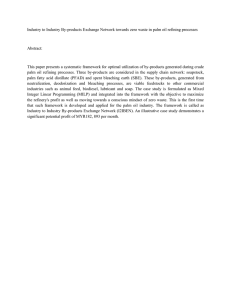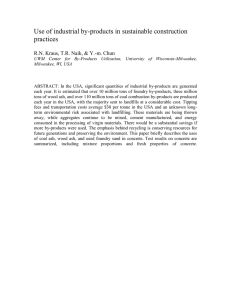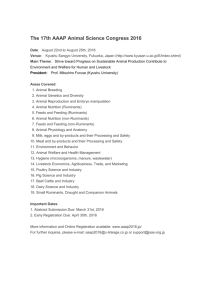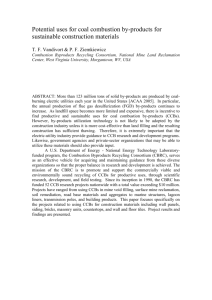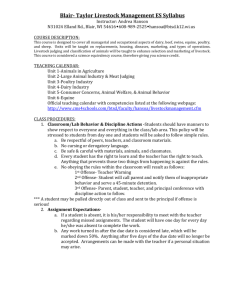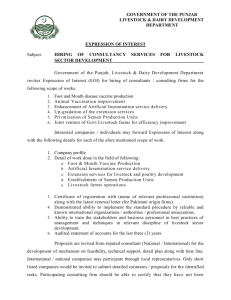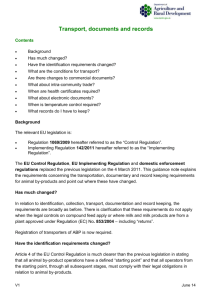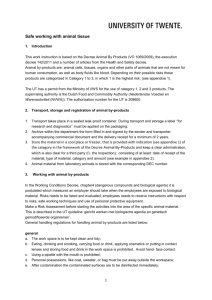Valuable Materials from Livestock By
advertisement
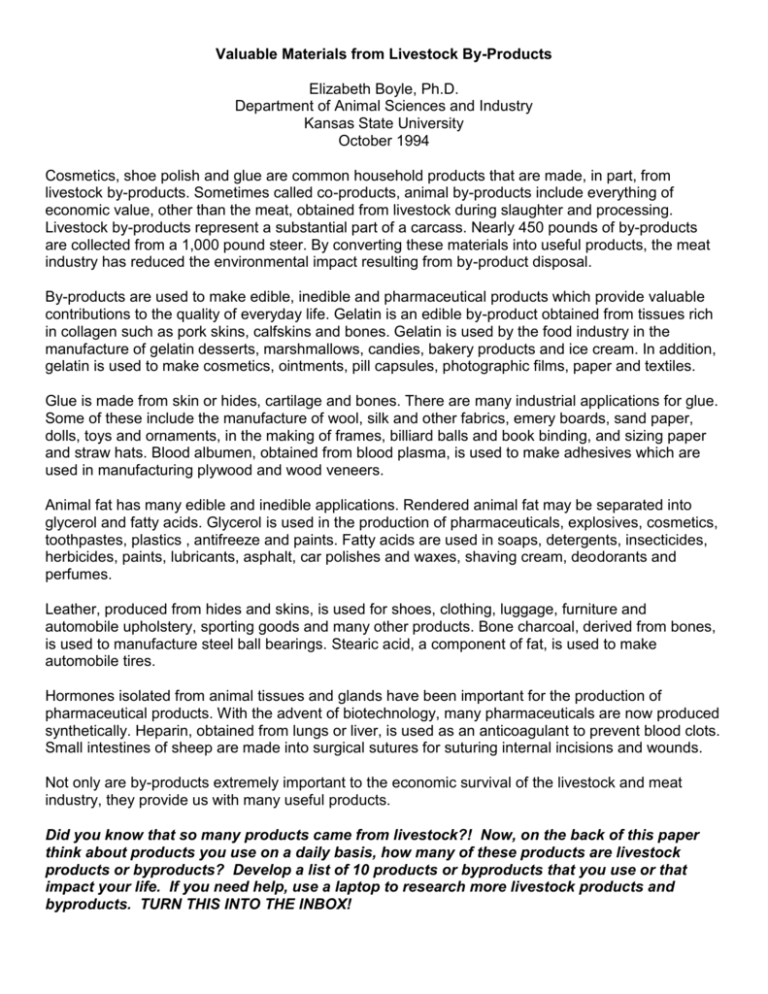
Valuable Materials from Livestock By-Products Elizabeth Boyle, Ph.D. Department of Animal Sciences and Industry Kansas State University October 1994 Cosmetics, shoe polish and glue are common household products that are made, in part, from livestock by-products. Sometimes called co-products, animal by-products include everything of economic value, other than the meat, obtained from livestock during slaughter and processing. Livestock by-products represent a substantial part of a carcass. Nearly 450 pounds of by-products are collected from a 1,000 pound steer. By converting these materials into useful products, the meat industry has reduced the environmental impact resulting from by-product disposal. By-products are used to make edible, inedible and pharmaceutical products which provide valuable contributions to the quality of everyday life. Gelatin is an edible by-product obtained from tissues rich in collagen such as pork skins, calfskins and bones. Gelatin is used by the food industry in the manufacture of gelatin desserts, marshmallows, candies, bakery products and ice cream. In addition, gelatin is used to make cosmetics, ointments, pill capsules, photographic films, paper and textiles. Glue is made from skin or hides, cartilage and bones. There are many industrial applications for glue. Some of these include the manufacture of wool, silk and other fabrics, emery boards, sand paper, dolls, toys and ornaments, in the making of frames, billiard balls and book binding, and sizing paper and straw hats. Blood albumen, obtained from blood plasma, is used to make adhesives which are used in manufacturing plywood and wood veneers. Animal fat has many edible and inedible applications. Rendered animal fat may be separated into glycerol and fatty acids. Glycerol is used in the production of pharmaceuticals, explosives, cosmetics, toothpastes, plastics , antifreeze and paints. Fatty acids are used in soaps, detergents, insecticides, herbicides, paints, lubricants, asphalt, car polishes and waxes, shaving cream, deodorants and perfumes. Leather, produced from hides and skins, is used for shoes, clothing, luggage, furniture and automobile upholstery, sporting goods and many other products. Bone charcoal, derived from bones, is used to manufacture steel ball bearings. Stearic acid, a component of fat, is used to make automobile tires. Hormones isolated from animal tissues and glands have been important for the production of pharmaceutical products. With the advent of biotechnology, many pharmaceuticals are now produced synthetically. Heparin, obtained from lungs or liver, is used as an anticoagulant to prevent blood clots. Small intestines of sheep are made into surgical sutures for suturing internal incisions and wounds. Not only are by-products extremely important to the economic survival of the livestock and meat industry, they provide us with many useful products. Did you know that so many products came from livestock?! Now, on the back of this paper think about products you use on a daily basis, how many of these products are livestock products or byproducts? Develop a list of 10 products or byproducts that you use or that impact your life. If you need help, use a laptop to research more livestock products and byproducts. TURN THIS INTO THE INBOX!
